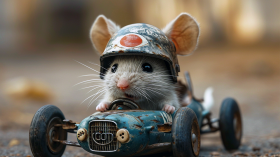In a successful stem cell experiment, a team of Chinese researchers was able to deliver the first chimeric monkey with glowing body parts.
First Newborn Chimeric Monkey with Glowing Body Parts
Chinese researchers have achieved a breakthrough by birthing a chimeric monkey with cells from two genetically distinct embryos of the same species. This groundbreaking feat marks the first successful demonstration of this technique in non-human primates. Led by Zhen Liu from the Chinese Academy of Sciences (CAS), this achievement holds immense implications.
Chinese scientists create monkey chimera using stem cells method for the first time
— Champagne Joshi (@JoshWalkos) November 10, 2023
Im sure it’s fine, oh wait….well at least it had cool green fingers and eyes.
“After surviving for 10 days, the health state of chimeric monkey #10 deteriorated with respiratory failure and… pic.twitter.com/B30ZI1Wlen
It sheds light on pluripotency in primates, offering insights into human biology, and paves the way for precise monkey models in studying neurological diseases and biomedical research. Furthermore, this advancement in genetic engineering could aid species conservation efforts. The milestone not only marks scientific progress but also promises advancements in understanding and treating various ailments.
Stem Cell Technology
The study focused on cynomolgus monkeys, widely used in biomedical research. Researchers derived nine stem cell lines from 7-day-old blastocyst embryos, cultivating them to enhance their capacity for diverse cell differentiation. Rigorous tests confirmed their pluripotency, capable of generating all cell types necessary for a live organism.
These stem cells, tagged with a green fluorescent protein, were then injected into early-stage monkey morula embryos. This procedure resulted in 12 pregnancies, yielding six live births in female macaques.
Morula embryos, commonly known as day 4 embryos, undergo cell compaction that initiates during the 8- to 10-cell stages in early embryonic development. They are often described to have indistinguishable nature.
Analyses revealed significant chimerism in a live-born monkey and one miscarried fetus, both males. Cells originating from the injected stem cells populated various tissues throughout their bodies. Extensive genetic examinations verified the presence of stem cells across critical organs such as the brain, heart, kidney, liver, and gastrointestinal tract.
Notably, in the live monkey, stem cells contributed between 21% to 92% across 26 different tissue types, averaging 67%. The fetal monkey exhibited lower percentages across tissues.
Furthermore, researchers confirmed the existence of stem cells in the testes and cells progressing into sperm cells, showcasing their broad integration into the reproductive system. This groundbreaking achievement signifies the successful integration of stem-cell-derived tissues into multiple organs of live monkeys. The findings hold immense promise for understanding primate biology, disease modeling, and advancing regenerative medicine approaches.
By demonstrating the feasibility of incorporating stem-cell-derived tissues across diverse organs in non-human primates, this study represents a significant leap in biomedicine, paving the way for potential applications in understanding human diseases, creating more accurate disease models, and developing innovative therapeutic strategies in the future.
Also Read: Kinkajou in Florida Petting Zoo Bites Birthday Girl Holding Lettuce as She Walked Over Enclosure
Further Studies and More Chimeric Monkeys
Authors Miguel Esteban from BGI Research and CAS emphasized this study's demonstration of monkey pluripotent stem cell's ability to differentiate into all monkey body tissues. This breakthrough significantly advances comprehension of primate pluripotency.
Co-corresponding author Qiang Sun of CAS highlighted the study's contribution to understanding naive pluripotency in primates. Future efforts aim to enhance chimeric monkey generation efficiency. The team plans to optimize stem cell culture conditions and blastocyst cultures for improved outcomes.
Moreover, investigators intend to delve deeper into the mechanisms supporting embryo survival within host animals. Insights gained will enhance chimera generation efficiency, fostering a better understanding of pluripotent stem cells and their potential applications in primate biology and regenerative medicine.
Related Article: Wild Rhesus Macaque Monkey On the Loose in Florida Knows How to Avoid Vehicular Traffic
© 2024 NatureWorldNews.com All rights reserved. Do not reproduce without permission.



![Roundworms with Short Memories 'Stop Forgetting' When Frozen or Given Lithium [Study]](https://1471793142.rsc.cdn77.org/data/thumbs/full/70295/280/157/50/40/roundworms-with-short-memories-stop-forgetting-when-frozen-or-given-lithium-study.jpg)

